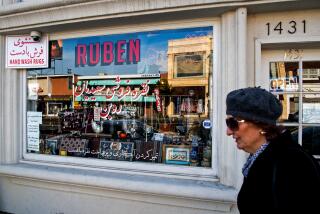You Belong To Me
- Share via
Penny, a third-generation American, marries her Iranian college classmate, Mahmoud. When his parents come to visit from Tehran, Penny’s parents give them a “Welcome to the U.S.” party. During the festivities, Penny’s mother presents her daughter-in-law Carol to Mahmoud’s mother. Carol pays her respects, then excuses herself to help bring out the food. Afterward, Penny’s mother comments proudly, “I’m so lucky to have such a wonderful daughter-in-law as Carol and such a fine daughter as Penny.”
Mahmoud’s mother corrects her. “Penny is my daughter now and Carol is yours.”
Stunned by the comment, Penny’s mother hostilely responds, “Not in this country.”
What did it mean?
Shocked by her own angry reaction, Penny later came to understand what new mother-in-law meant. When Iranian couples marry, the bride is expected to live in her husband’s home and become a part of her in-laws’ family.
Anthropologists call this a patrilineal and patrilocal marriage system, one that is commonly found all over the world.
Asian marriage patterns are similar; generally brides live in their husband’s family household. Among the Hmong, the in-laws may later send the bride back home to her parents if she is unfaithful, lazy or doesn’t fulfill her household responsibilities. They call this “washing the parents’ door.”
The custom of newlyweds living with the groom’s parents continues in this country. However, as one might expect, immigrants are affected by the American custom of bridal couples creating independent households. Those with sufficient income are adopting this custom.
*
Folklorist Norine Dresser is the author of “Multicultural Manners” (Wiley, 1996). E-mail: norined@earthlink.net
More to Read
Sign up for Essential California
The most important California stories and recommendations in your inbox every morning.
You may occasionally receive promotional content from the Los Angeles Times.













